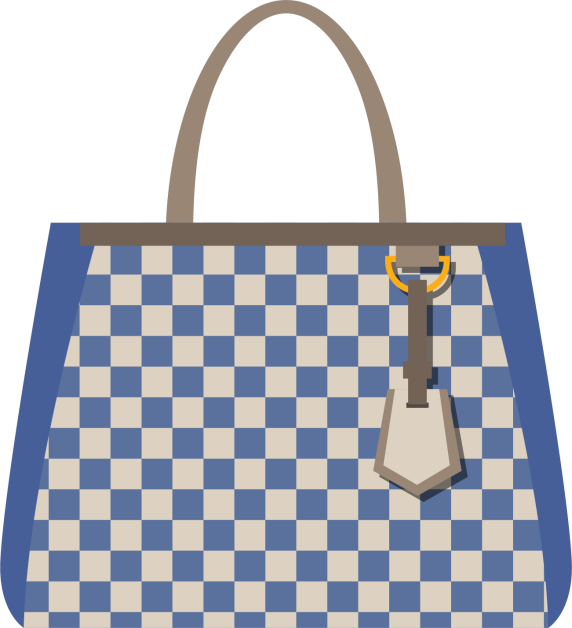



Whilst luxury fashion house Louis Vuitton's most ubiquitous and widely recognised design is undoubtedly the signature LV monogram print, the checkerboard "Damier" follows closely behind. The brand was however disappointed by the EUIPO's decision in October 2022 that the white and blue version of the print ("Damier Azur") lacked the distinctive character necessary to obtain protection.
by Joanna Corbett Simmons


Blake Morgan e-Magazine | Winter 2023 | Issue 6

Ultimately, Louis Vuitton's trade marks were declared invalid as it was unable to provide evidence of the marks having acquired distinctive character through use in six of the EU member states in which the registrations would have applied. The key lesson for other brands who are considering registering non-traditional trade marks is to ensure that acquisition of distinctive character through use can be evidenced appropriately throughout the territory and to seek advice from a specialist before submitting an application to avoid lengthy and costly legal challenges.

The Courts rejected this argument for being too general on the basis that Louis Vuitton had failed to present precise and substantiated evidence of that.

The Court reaffirmed that registration is subject to proof that the mark has acquired distinctive character through use throughout the territory.
This decision was remitted back to the Fifth Board of Appeal in 2021, which decided that Louis Vuitton had failed to provide sufficient evidence to support a finding of acquired distinctiveness through use. In particular, the brand was unable to establish acquired distinctiveness for six EU member states: Bulgaria, Estonia, Lithuania, Latvia, Slovakia, and Slovenia. Louis Vuitton again appealed and the latest judgment upheld the EUIPO earlier decisions, rejecting Louis Vuitton's claim of acquired distinctiveness through use of its ‘Damier Azur’ pattern on grounds of unsatisfactory evidence.
The Court reaffirmed that registration is subject to proof that the mark has acquired distinctive character through use throughout the territory. This can either be proved collectively or separately for member states or groups of member states but must include ‘sufficiently specific, substantiated and credible’ evidence relating to all EU member states.

Louis Vuitton argued that the Court's analysis was "detached from reality" and ignored the fact that, "throughout the European Union, consumers engage in homogeneous behaviour as regards luxury brands, particularly because they travel and use the internet regularly". The Courts rejected this argument for being too general on the basis that Louis Vuitton had failed to present precise and substantiated evidence of that.
The decision underlines the importance of comprehensive evidence in trade mark opposition proceedings such as this and, the high bar set by the EU Courts when considering the acquisition of distinctive character through use within the EU as a whole. It is however indicative of the current trend in registering non-traditional trade marks.


Louis Vuitton's battle dates back to 2015 when both the EU trade marks for the classic brown and beige and the grey versions of the Damier print were cancelled on the basis that the registrations were "basic and banal" and "lacked distinctive character". Similarly, the Damier Azur trade mark was declared invalid in 2016 for the same reasons. This decision was appealed, upheld, appealed again and overruled for the Court's failure to examine all of the relevant evidence demonstrating the distinctive character acquired through use of the mark and to carry out an overall assessment of that evidence.



Whilst luxury fashion house Louis Vuitton's most ubiquitous and widely recognised design is undoubtedly the signature LV monogram print, the checkerboard "Damier" follows closely behind. The brand was however disappointed by the EUIPO's decision in October 2022 that the white and blue version of the print ("Damier Azur") lacked the distinctive character necessary to obtain protection.




Ultimately, Louis Vuitton's trade marks were declared invalid as it was unable to provide evidence of the marks having acquired distinctive character through use in six of the EU member states in which the registrations would have applied. The key lesson for other brands who are considering registering non-traditional trade marks is to ensure that acquisition of distinctive character through use can be evidenced appropriately throughout the territory and to seek advice from a specialist before submitting an application to avoid lengthy and costly legal challenges.
Louis Vuitton's battle dates back to 2015 when both the EU trade marks for the classic brown and beige and the grey versions of the Damier print were cancelled on the basis that the registrations were "basic and banal" and "lacked distinctive character". Similarly, the Damier Azur trade mark was declared invalid in 2016 for the same reasons. This decision was appealed, upheld, appealed again and overruled for the Court's failure to examine all of the relevant evidence demonstrating the distinctive character acquired through use of the mark and to carry out an overall assessment of that evidence.

This decision was remitted back to the Fifth Board of Appeal in 2021, which decided that Louis Vuitton had failed to provide sufficient evidence to support a finding of acquired distinctiveness through use. In particular, the brand was unable to establish acquired distinctiveness for six EU member states: Bulgaria, Estonia, Lithuania, Latvia, Slovakia, and Slovenia. Louis Vuitton again appealed and the latest judgment upheld the EUIPO earlier decisions, rejecting Louis Vuitton's claim of acquired distinctiveness through use of its ‘Damier Azur’ pattern on grounds of unsatisfactory evidence.
The Court reaffirmed that registration is subject to proof that the mark has acquired distinctive character through use throughout the territory. This can either be proved collectively or separately for member states or groups of member states but must include ‘sufficiently specific, substantiated and credible’ evidence relating to all EU member states.
The Court reaffirmed that registration is subject to proof that the mark has acquired distinctive character through use throughout the territory.
The Courts rejected this argument for being too general on the basis that Louis Vuitton had failed to present precise and substantiated evidence of that.

Louis Vuitton argued that the Court's analysis was "detached from reality" and ignored the fact that, "throughout the European Union, consumers engage in homogeneous behaviour as regards luxury brands, particularly because they travel and use the internet regularly". The Courts rejected this argument for being too general on the basis that Louis Vuitton had failed to present precise and substantiated evidence of that.
The decision underlines the importance of comprehensive evidence in trade mark opposition proceedings such as this and, the high bar set by the EU Courts when considering the acquisition of distinctive character through use within the EU as a whole. It is however indicative of the current trend in registering non-traditional trade marks.
